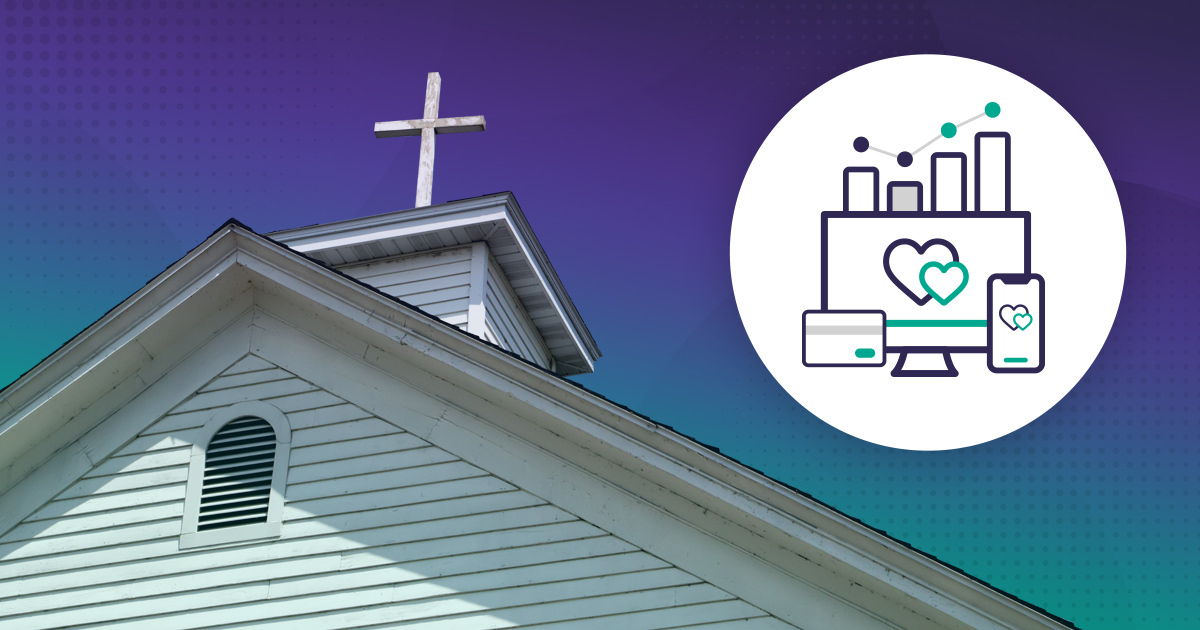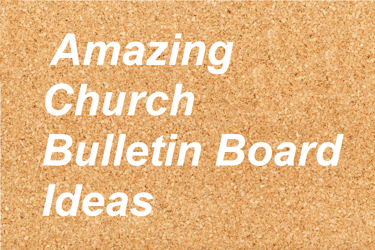
A great church website is a tool that helps you connect, engage and grow. Visitors who can't find service times, watch sermons or donate online quickly leave. This guide will explain how to create a church website. It will walk you through how to make a church website design that converts, covering everything from church website SEO (search engine optimization) to mobile optimization. Whether you choose Wix, WordPress or a custom church website, you'll get actionable steps to make your site engaging, fast and user-friendly.
Table of Contents
- What Makes a Great Church Website?
- What Are the Best Design Options for a Church Website?
- DIY vs. Professional Development
- Is a Website Builder the Right Choice for Your Church?
- How to Create a Church Website Using WordPress
- How to Create a Church Website Step by Step with Wix
- Essential Website Content & Integrations
- Content Management & Ongoing Maintenance
- How Can SEO Improve Your Church Website's Visibility?
- The Top 20 Marketing Strategies for Churches Looking to Grow Fast
Too Busy to Read? Listen to the Key Takeaways
Get the key takeaways by clicking to listen the podcast summary now!
What Makes a Great Church Website?

A church website has to be engaging and functional. Here are some features to consider in how to create a church website.
Key Features of an Effective Church Website
A church website should be mobile-friendly, secure and easy to navigate. This section will explain these features, ensuring your site is optimized.
Mobile-Friendly, Responsive Design
With 98 percent of the population accessing the internet via mobile phones, your site has to be mobile-friendly and responsive. These features are essential for people looking for churches on the go. It ensures your site loads quickly and formats properly when someone searches "churches near me."
A mobile-friendly church website is also more likely to reach the top of search engine rankings. Google now implements a mobile-first indexing system that prioritizes mobile-friendly websites in online searches. Sites designed for mobile optimization will be more likely to appear on the first page of Google.
Here are some tips that ensure a mobile-friendly design:
- Optimize Images: Integrate images that are high quality but small enough so as not to increase load times substantially.
- Use Legible Fonts: Use fonts that are easily read on small devices.
- Integrate a Viewport Meta Tag: This HTML element ensures your website formats properly on a mobile screen.
- Size Elements Appropriately: Ensure CTA buttons and other links are big enough to see and press on a small screen without overwhelming it.
- Avoid Pop-ups: Pop-ups are tricky to view on mobile screens and may increase load times.
Security
Your website needs to be secure. Church website security is critical. Many churches collect sensitive information for donation purposes. People expect church websites to be trustworthy. A data breach could damage your organization's reputation.
You can ensure your website is secure by:
- Purchasing an SSL Certificate: An SSL Certificate is a digital file installed on a web service that provides an encrypted connection between the server and the website browser. Users know a site is SSL protected because it will load as HTTPS instead of HTTP. You can purchase an SSL certificate from a certificate authority. Install it, maintain it and renew it before it expires.
- Regular Security Updates: Your website and the various tools you use to maintain it should be updated regularly to ensure they align with the latest security standards.
Easy Navigation and Clear Calls to Action
Your website should be easy to navigate. You can ensure easy navigation by:
- Limiting Menu Options: Avoid overloading users with too many menu options that make locating the pages they want to access challenging.
- Incorporate Calls to Action: Incorporate calls to action that take users directly to pages where they can make donations, sign up for newsletters and explore other pages. CTAs also increase conversion rates by 161 percent, offering additional benefits.
- Split Categories: If you have a lot of pages, consider splitting them into categories. For example, if you offer several church services, you may include a 'Services' menu item with a drop-down feature that takes users to each service. You may also include some menu items in the page's footer to avoid clutter.
- Add a Search Bar: A search bar can help users find necessary information.
- Include Links to the Home Page: Each page should feature a link to the home page, allowing users to return to the main menu.
- Make Good Use of Colors: Use contrasting colors that make pages look clean and neat, not jumbled.
- Use Short, Concise Names: Label your menu items with short, concise titles so users will understand each page's purpose.
What are the Best Design Options for a Church Website?
People wondering how to make a church website can’t afford to overlook design. Your website's design makes it visually appealing. Here are some factors to consider when choosing the right design for your church website.
Understanding the Importance of Church Website Design
The design is the first thing a person will see when they visit your website. In fact, 75 percent of consumers judge an organization’s credibility by its design and roughly 94 percent of first impressions are based on web design.
Visitors may bounce to a competitor if the website doesn't look clean and visually appealing. But don’t worry. Here are some tips that support an attractive design.
Responsive Web Design and Mobile Optimization
Mobile responsiveness is vital to every design element. Before placing elements on the page, consider how they impact load times and fit on a small screen. Determine the perfect balance of quality and size for optimal results.
Visual Storytelling and Branding Aligned with Your Ministry's Values
Storytelling is critical to marketing. It helps engage audiences and makes organizations more relatable.
Churches can tell stories through text, but the organization will be more relatable if the website tells a story through its visual elements. Here are some steps that apply:
- Use colors that you feel best represent your church brand. Use bold colors to express the glory of your religion or use soft tones to send a more welcoming, child-friendly message. Use a modern color scheme to attract younger generations.
- Incorporate images that tell the whole story. Your pictures should align with your brand. You may choose religious images to express a sense of connection through religion or include photographs of your church members to appeal to communities.
- Carry it through. Ensure your storytelling carries through to the text you use, your layout and the other elements you include on your website.
Exploring Church Templates
Church website templates play a massive role in your website design. They dictate the layout, color and some design elements.
Churches can customize their templates, but several website-building platforms offer pre-made templates you can use. Popular options include:
- WordPress: WordPress templates allow you to create websites quickly without extensive code knowledge. They’re easy to customize and offer responsive designs that work well with mobile. The platform provides free and low-cost options.
- Wix: Wix offers a wide selection of website templates categorized by industry, so you can easily find one that aligns with your business type. You can customize them in color, font, images and content. The drag-and-drop interface makes them easy to work with.
- SquareSpace: SquareSpace offers unique template options, including magazine-style blog templates. The user-friendly interface makes designing easy. The templates are mobile-friendly and customizable.
- Weebly: Weebly offers a wide range of templates that cater to different business types. The platform provides a responsive design and ease of use, ensuring churches can switch themes if desired. However, some feel Weebly templates are generic and may not help your website stand out.
Custom Design vs. Pre-Made Templates: What's Best?
Pre-made templates offer many advantages to users, including the following:
- Typically free or low-cost
- Don't require coding skills, which could potentially lead to money savings, reducing the need for training and hiring professionals
- Offer a wide range of designs
- Offer customizable designs
- Provide a responsive interface
However, the biggest downside of pre-made templates is their potential to look generic. Despite customizable options, they may not have a unique appearance. This issue may seem minor, but it can make all the difference in a competitive arena.
DIY vs. Professional Development
In the design stage, you need to consider whether you want to DIY church website creation or hire a professional for church website development. This section will explore the pros and cons involved in each.
How Much Does It Cost to Build a Church Website?
The cost of building a website varies greatly depending on which services you integrate, which platforms you use and whether you decide to DIY or go professional. Typical costs include:
- Website Builder: $0 to $200 per month: Website builders can be free, but many offer customized premium services and add-ons that can impact costs.
- Website Design: $0-$10,000: You can use a free website builder to design your website or pay for professional services.
- Web Hosting: $3-$250 monthly: Websites must be hosted to appear online. You can opt for shared hosting, which costs $3-$10. It's a good option for small businesses that don't get much website traffic, but you may deal with reduced performance and security. Dedicated hosting, more suited for large companies, typically costs between $80 and $250 monthly.
- Domains: $1 to $100 per year: Domains are your website home address. Simple names, like carinsurance.com, will come with a hefty price tag. Long domains that are not as search-friendly are more affordable. You will also pay more for a .com, .org or .net than for .land or .us.
- Templates: $0 - $70+: Templates can be free, but you will pay more for more complex and customizable ones.
- CMS: $0 - $160+ per month: A content management system (CMS) is a software application that allows the administrator to create, manage or modify content without extensive coding knowledge. While some are free, most offer subscription services that include technical support, regular updates and advanced features.
- SSL Certificates: $0-$100 annually: SSL certificates keep your site secure. You can get them for free, but free certificates typically come with shorter validity periods and more manual processes. Other options include purchasing an SSL certificate for $100 a year or signing up for a website builder that provides SSL certification in its services.
- E-Commerce Functionality: $20 per month plus payment and processing: e-commerce functionality allows you to sell items from your website. Churches can use this feature to sell branded merchandise and other products that keep their organization afloat.
- Apps and Integrations: $0-$100 per month: Some website builders allow you to integrate third-party features that will enable people to access loyalty apps so you can monetize your products. These features are typically premium services, but many offer free trials.
- Marketing Features: $0-$1,000+ per month: Churches may partner with marketing companies to ensure sites are SEO optimized. They will ensure your website is updated to the latest SEO features.
- Professional Services: $500 to $10,000: If your church has a big enough budget, you may hire a professional to design your website. Some will also offer SEO services that can increase expenses.
How to Create a Website Free or On the Cheap
With so many options for how to create a church website, you can do it without spending much money. The only required expenses are domains and hosting. Beyond that, you can explore the free and inexpensive resources listed above to create a website without a huge investment.
When to Consider Hiring a Professional Developer
A professional designer is expensive, but sometimes it makes sense to hire one. Here are some factors that may encourage you to bring one on board:
- You have the budget: Churches that have the budget may hire a professional to help them achieve a unique design.
- You want your website to stand out: A professional designer will create a website that helps you stand out.
- You want church website SEO: Some designers can provide ongoing SEO services, ensuring your site reaches the top of search engine rankings.
- You have complex needs: A web designer can help put together a website with interactive features, multi-level navigation, customized interfaces, integration with external systems and dynamic content.
Is Website Builder the Right Choice for Your Church?
Churches that use a website builder need to decide which is best suited to their needs based on factors like ease of use, flexibility and scalability. The following sections will review some of the top choices.
Comparing Wix, WordPress and Other Website Builders
This section will compare top website builders based on various features.
Wix:
- Ease of use: Wix is one of the best website builders because it’s so easy to use. The drag-and-drop functions allow you to use it without any coding knowledge.
- Scalability: The platform automatically scales to handle increased traffic. You can increase or decrease bandwidth by upgrading your plan at any time.
- Flexibility: Wix is flexible in that it offers various templates and allows you to edit images, apply filters and create AI images.
- Responsive Church Website Design: Wix Studio offers responsive designs and flexible grids, ensuring they’re formatted for various devices.
- SEO: The platform offers various SEO tools, including a checklist, accessibility and a Google Search Platform.
- Integrations: Wix integrates various marketing tools, including Google Search Console, SemRush, Google My Business, and SEOmatic.
- Disadvantages: Although Wix offers several benefits, it has its share of downsides, including a lack of customization, slow load speeds and a lack of external third-party apps and plugins.
WordPress
- Ease of use: WordPress offers a user-friendly, intuitive dashboard that doesn’t require technical expertise.
- Scalability: The platform can be scalable depending on the site. You can ensure scalability by using a scalable hosting provider, integrating caching plugins, optimizing your database, compressing images, using a Content Delivery Network (CDN) and using efficient coding practices.
- Flexibility: WordPress is flexible due to its various themes and plugins, customizable page builders and modifiable code.
- Responsive Design: The platform is designed to be responsive and adapt to various screen sizes. It will be more responsive with the right images, a CDN and the Accelerated Mobile Pages (AMP) plugin.
- SEO: WordPress stands out for its SEO features, which include Yoast and various plugins. It also offers underlying code that makes it easy for crawlers to index your website.
- Integrations: The platform is integration-friendly, offering a vast plugin library and REST API, enabling developers to create custom integrations and seamlessly connect with other platforms.
- Downsides: Despite many benefits, WordPress has its share of downsides. It requires ongoing maintenance to ensure security and scalability. The platform can also be costly, considering all the features.
Squarespace
- Ease of use: Drag and drop features, a user-friendly design, pre-built templates and comprehensive tutorials make Squarespace easy to use.
- Scalability: Squarespace offers unlimited storage and bandwidth. However, it doesn’t handle high traffic as well as some other sites do. It also doesn’t offer as many customizable features.
- Flexibility: The platform offers flexible designs, plans and layouts.
- Responsive Design: Squarespace designs are automatically formatted to fit various device screens.
- SEO: The platform isn't as SEO friendly as other web builder sites due to slow page speeds, a lack of image compression, no WebP, a local business default schema that can't be changed, a lack of SEO extensions and missing SEO settings.
- Integrations: Squarespace integrates well with social media, email marketing tools, analytics platforms and e-commerce solutions.
- Downsides: Although Squarespace offers several benefits, it’s lacking in its customizations, SEO support and third-party tools. It can also be more costly than other web-building platforms and doesn’t have an autosave feature.
Duda
- Ease of use: Duda is easy to use due to its pre-designed templates, drag-and-drop interface and mobile responsiveness.
- Scalability: The platform can handle high traffic volumes and is a good choice for churches and other organizations that want to build multiple sites quickly.
- Flexibility: Duda is flexible for different users. It’s ideal for hands-on users, busy professionals and agencies. The platform offers customizable options and various navigation styles for other devices.
- Responsive Design: The platform's design automatically adjusts to various screen sizes. It also offers DudaFlex and Auto Layout, which ensure speed and responsiveness.
- SEO: Duda offers several SEO features, including alt tags, meta descriptions, site maps and automatic optimization for page speed.
- Integrations: The platform is highly integration-friendly, offering seamless connection with third-party platforms.
- Downsides: Despite Duda's many benefits, it offers some downsides. For example, there’s no free plan, so it’s more expensive than other web builders. Its customization options are also limited and a learning curve is required for advanced features. It also offers limited grid systems, a lack of control over your server, obstacles when switching templates and no live chat or phone support without the Pro Plan.
GoDaddy
- Ease of use: GoDaddy is easy to use due to its intuitive interface, drag-and-drop functionality, guided setup process and mobile app accessibility.
- Scalability: The platform is scalable, offering a wide range of hosting plans and easy upgrades.
- Flexibility: GoDaddy is flexible in that it offers multiple hosting plans, WordPress compatibility and e-commerce capabilities. However, it offers limited customization and some advanced features require a learning curve.
- Responsive Design: The platform's web builder tool allows websites to adjust to different screen sizes automatically.
- SEO: GoDaddy offers SEO tools that aren't as advanced as their competitors.
- Integrations: The platform is somewhat integration-friendly, integrating with Facebook and Instagram. However, its integrations are limited compared to other website builder platforms.
- Downsides: GoDaddy is a popular platform, but it has some disadvantages, including slow hosting, a lack of advanced features, unlimited storage or bandwidth, limited customizations and minimal security. It can also get expensive, especially with additional SEO tools.
Why Wix or WordPress are Likely the Best Choices
While each website builder offers advantages, Wix and WordPress stand out due to their extensive themes, ease of use, SEO features, reasonable costs, community support and plugin ecosystem. But which one is best for your church?
WordPress is a good choice for congregations with staff members or volunteers familiar with the platform. It may be slightly more complicated than Wix, but it offers more flexibility and customization. The platform also provides several tools and plugins, many of which are free.
Wix is easier to use, making it ideal for someone without website experience. You can use it to build a website in a few hours. The platform also includes hosting and other components that make it more manageable. These are premium features but relatively inexpensive, so even a small church can typically afford them.
How to Create a Church Website Using WordPress
Have you decided WordPress is the best platform for your church website? The next step is learning how to use it. This section will review what's involved.
Choosing a WordPress Theme for Your Website
WordPress themes are pre-designed templates that determine a website's appearance, layout and functionality. Users can choose from various themes, including:
- Paid Premium Themes: These are premium website templates that can be purchased from marketplaces and developers. They offer advanced features and customization that support a high-quality design.
- Free Themes: Developers distribute free themes throughout the WordPress platform. They’re a budget-friendly option but don’t offer advanced features.
- Classic Themes: Classic themes are built via PHP and are not easily customized. However, an experienced WordPress user may work with these themes to find a stable design solution.
- Block Themes: Block themes allow full-page customization, including the headers and footers. They’re called block themes because the page is divided into blocks.
- Niche Themes: Niche themes are pre-built layouts designed for specific industries and uses. Common niches include ecommerce, photography, blogs, podcasts, portfolio, etc.
- Multi-Purpose Themes: These themes offer various features and functionalities so they can easily be adapted to multiple needs and businesses.
- Page Builder Themes: Page builders are powerful design tools that support optimal customization. Choose one that's compatible with your website theme for optimal results.
Choosing a Theme
Churches should choose a theme based on the following factors:
- Fits the Website Purpose and Audience: The theme should offer features and functions that support your website function and appeal to your target audience.
- Cost: Many churches operate on a limited budget, so cost is a factor. However, if possible, don't choose the cheapest theme, but choose the one that offers the most value for your money.
- Design and Layout: The theme should support an aesthetically pleasing design and layout that makes people want to visit your site.
- Performance: You may prefer a theme with a wide range of features. However, themes with excessive code and features may cause your site to load slowly.
- SEO: Choose a theme with SEO plugin compatibility to ensure your website appears near the top of search engine rankings.
- Customization: Ensure the theme is customizable to get your desired functionality and aesthetics.
- Security and Support: The website should be secure to prevent cybersecurity issues. The platform should also offer support to guide you through issues. Choose a platform that updates regularly to the latest security standards. You can also determine the type of experience it provides by checking out customer reviews and testimonials.
- Compatibility with Plugins: Plugins allow you to add features like contact forms, galleries and online stores. Your theme should integrate with these plugins seamlessly to support optimal functionality.
- Documentation and Community Support: Documentation means steps are well documented, ensuring you can customize systems easily. Community support means the platform offers 'ask the community' support so you can ask peers for advice if you struggle with the system.
Essential Plugins and Integrations
After setting up your themes, you may want to add plugins and church website integrations to ensure optimal functionality. Here are some plugins your church may wish to explore.
- Event Calendars: An event calendar allows visitors to see what's happening at your church and perhaps join in the fun.
- Donation Systems: Consider setting up a donation page on your website to make online giving easy.
- Sermon Streaming: Some plugins may enable live streaming. You can stream your sermons to attract members and increase your reach, possibly helping with revenue.
- Yoast: Yoast may be the most important plugin of all. It enables you to access advanced SEO capabilities such as meta descriptions, SEO titles, keywords, links and more. Check out this video to learn more about Yoast and how to use it.
How to Create a Church Website Step by Step with Wix
Some churches may prefer Wix for ease of use. The following sections will explain how to start your Wix website-building adventure.
Getting Started with Wix
First, you need to set up an account and choose a church-specific template. Setting up an account is easy. Go to the signup page, register with an email address, Facebook or Google Account, create a password and click "Sign Up."
Next, you need to choose a church-specific template. To do this:
- Go to the template page
- Navigate to the 'Community" category, then look for subcategories like "church" or "religious organization."
- Choose a template best suited to your organization
This video provides more details on how to make a church website with Wix.
Customizing Your Site for Mobile and Desktop
Wix has a mobile editor feature allows you to adjust text, images and layouts to ensure your website will display well on mobile and desktop devices.
Here are some elements that ensure an optimized display:
- Integrate features that are high quality but won't slow load times
- Use code that automatically adjusts to the screen
- Consider eliminating extraneous code that slows load times
- Use legible fonts that are easy to view on a small screen
- Avoid pop-ups, which are hard to view on small screens and can increase load times
Click on the mobile view icon at the top of the screen to see how your website displays on a mobile device. Adjust if necessary.
Tips for Maximizing SEO with Wix
Wix offers several SEO tools that help your website perform better in SEO rankings. They include:
- Wix's SEO Checklist: Wix offers an SEO checklist that you can go through to ensure you've included all the SEO elements
- Wix SEO Assistant: This tool analyzes your website for issues and recommends SEO improvements
- Wix SEO Wiz: Wiz analyzes your website, location and keywords to improve your SEO
- Wix Analytics: Provides insight into traffic so you can see how changes affect your SEO
- Site Verification API: Verifies your site ownership and submits your sitemap to the Search console.
You can learn more about Wix SEO tools and how to use them by checking out these video courses available on the Wix platform:
Essential Web Content for Every Church
The content you add to your website for church is up to you, but there are a few types of content your website can't be without. The following sections will review the content your website needs.
Core Website Content for Every Church
Every church website needs the following content:
- Home: Your home page welcomes online visitors to your church. It should summarize what your church is about. The home page should also provide links to other website pages.
- About Us: About Us is the story of your church. It should explain how your church got started and what it offers. The About Us section should also include your church mission and vision.
- Ministries: Ministries may be compared to a business website's 'services' page. They outline the activities that support the church's mission.
- Sermons: Churches may share their sermons through videos, transcripts or summaries. They help online users get acquainted with your church message and experience.
- Events: Your website should include a calendar listing regular and special events. You may even include links that take visitors to registration pages if applicable.
- Contact Us: A Contact Us page provides an easy way for online visitors to get in touch with any questions. It should list an email and phone number and offer a contact form.
Integrating Your Church's Website Donation System
A church website should have a donation page that allows visitors to donate to the organization quickly. To set this up, you need to:
- Choose a Donation Platform: Many website builders offer features enabling you to set up a donation page.
- Choose a Payment Processor: There are several payment processors to choose from. Pick one best suited to your church needs.
- Customize Your Donation Page: Customize your page to suit your brand and make it simple to fill out. Take out unnecessary fields so users can complete the form quickly. You may customize it to allow users to choose the program or cause they want to donate to.
- Include CTAs Throughout Your Site: Place CTAs throughout your website that take people directly to your donation pages to encourage giving.
- Include Recurring Donations: Allow people to choose customized amounts and recurring donation options to maximize giving. Recurring donations can increase revenue by 144 percent.
Vanco's Giving Platform will make setting up donations on your website easy.
Church Event Calendar and Sermon Streaming Features
Event calendars and sermon streaming are two essential elements of a church website. Here's how to set them up.
Church Event Calendar
There are several ways to embed a church event calendar on your website. You may:
Use a Widget:
- Sign up or log into your preferred widget service
- Create and customize your calendar
- Copy the embed code
- Log into your website's admin panel
- Create or edit a page
- Paste the embed code where you want your calendar to appear
- Save and view your page
Embed a Google Calendar
- Open Google Calendar
- Click settings on the top right
- Click the name of the calendar you want to embed
- Copy the iframe code in the 'integrate calendar' section
- Paste the iframe code into your website
Embed an iCal feed
- Make your calendar public
- Copy the iCal feed URL
- Paste the iCal feed in your calendar
Once your calendar is set up, update it regularly to ensure it shows your latest events. A calendar that is out of date or has no future events sends a bad message to website users. Include links to event pages where users can register or purchase tickets if possible.
Sermon Streaming
Livestreaming sermons can boost engagement, increasing your website's SEO rankings. It also broadens your church's reach, possibly soliciting donations outside your following. Here's how to embed live streaming in your website:
- Choose a livestream platform: YouTube and Vimeo are free and popular options. However, some premium options offer advanced features such as customization and optimization. Vanco offers a Video Streaming Platform that makes it easy to stay connected.
- Create a live stream channel: This process varies depending on the platform. Most platforms will walk you through the necessary steps.
- Generate an Embed Code: The platform will provide an embed code to place on your website where you want the video to appear.
- Save your changes and publish the page. Test it out to ensure everything appears correctly.
- Transform your church into a makeshift recording studio with the proper lighting and sound augmentation to ensure a professional presentation.
Social Media Integration for Church Websites
Churches may also choose to include a social media feed on their website. A social media feed increases engagement by showing real-time content. It also builds trust through social proof. It’s considered user-generated content (UGC), which can increase engagement by 28 percent.
You can integrate a social media feed on your website with the following process:
- Choose a platform: You can stream feeds from Instagram, Facebook and others.
- Access an embed code: Navigate to the post or feed you want to embed and look for an 'embed' option to provide you with an HTML code snippet.
- Post the Code: Access the HTMP editor of the page and find the appropriate section to paste the feed. Paste the embed code into the desired section.
- Customize the Appearance: Most platforms will allow you to customize the color scheme, layout and other visual elements to match your website.
Embedding social feeds only scratches the surface of how you can use social media to increase your website's visibility. Check out our free Church Social Media Strategy Guide to learn more.
Church Blog
Blogs are ideal for engagement. With regularly scheduled blogs, fresh content is presented each week, making your site appear relevant to search engines and increasing SEO opportunities for keywords and links.
Churches may struggle to develop new blog topics regularly, but a church sermon offers endless inspiration. The blog can list the sermon transcript or summarize the sermon. Include the video itself for extra engagement.
This video provides a fast and easy way to create blogs from sermons.
However, sermons shouldn’t be the only source of blog content. If you are looking for more ideas, Vanco has your back. Check out our article on 50+ Free Chat Prompts for Church Leaders and Pastors to learn how to work with AI to get optimal results.
Content Management & Ongoing Maintenance
Church content is not a set-it-and-forget-it system. It requires ongoing management and maintenance to perform its best. A church content management system can be a helpful tool in these continuing efforts.
Using a Content Management System (CMS)
A CMS makes content management easy. Install it on your web server, configure the CMS and start writing. Here are the benefits it provides.
- Content Creation: Create content on the CMS interface.
- Manage and Organize Content: Management and organization make content easy to find and reuse.
- Publish Content: Use the tool to publish content on the web.
- Build a Website: A CMS will even help you build a website from scratch without using code.
Choosing the Right Hosting Provider
A web host stores content like text, photos and videos on web servers so users can access them online. They also provide technical support and security tools.
There are several factors to look for when choosing a website host, including:
- Uptime: The host should be reliable. Preferably, it should offer 99.9 percent uptime, meaning your site is down no more than 8 hours a year.
- Security: The platform should offer optimal security features to keep your website safe.
- Support: Look for a church website hosting provider that offers 24/7 support.
- Scalability: The right provider will scale to your company's needs.
- Backup: Consider how often the platform backs up your site, ensuring it’s safe if disruptions occur.
Recommended hosting platforms include GoDaddy and Bluehost. You may also use Wix, which integrates hosting into its platform. It uses cloud services and a CDN to distribute content quickly.
Church Website Security Best Practices
A secure hosting provider will keep your church website safe. However, you may take extra steps to ensure your site is secure. Here are some suggestions.
- SSL Certificates: An SSL certificate encrypts data between a browser and a website, keeping your information secure.
- Backing Up Data: Backing up data ensures it’s retrievable during an attack. Although many hosting platforms offer this service, you may do your own backups for added security.
- Use a Web Application Firewall: A firewall filters and monitors traffic and blocks suspicious requests.
- Keep Software Up to Date: Update software regularly to ensure it meets current security standards.
- Limit Access: Be careful about who has access to your website. Limit access to those who need it.
Maintaining a Responsive and Mobile-Friendly Church Website
Google Page Speed Insights is one of the most effective tools for checking your site's performance. It will analyze your site speed and provide suggestions for improvement, including metrics related to Google's Core Web Vitals. You can access it through your page browser. Then:
- Enter your URL into the designated field.
- Click analyze.
- Review the report.
Other tools you can use to check your website's performance include:
You should also maintain your website's mobile friendliness by using elements that support fast load times, ensuring visuals automatically adjust to various devices and creating designs that can be seen and activated on small screens.
How Can SEO Improve Your Website's Visibility?
If your website is not performing as well as you’d like, you may consider improving SEO. Here are some SEO strategies to consider:
- Keyword Research: Conduct keyword research to determine which queries users are likely to enter into search engines when they search for your church. Integrate high- and low-competition terms to make your site more visible. Include keywords in strategic locations in your content, such as in headings and at the top and bottom of pages.
- Meta Tags: Meta tags are HTML snippets that provide information about a page to search engines and users to make it more findable on the internet. There are various types of meta tags, including meta descriptions that summarize what a page is about, meta charset which sets the character encoding for a page, meta refresh that sends users to a new URL after a specified amount of time and viewport, which sets the page width and zoom level.
- Alt Texts: Alt text is typically used with images. It explains what the image shows, which can help increase keyword optimization. Alt text also explains images to visually impaired people, making your page more accessible.
How to Optimize Your Church Website for Search Engines
On-page SEO is the SEO technique integrated into your website pages to boost traffic. Keyword research, meta tags and alt text contribute to on-page SEO. Here are some other functional strategies.
- URLs: Use short, description URLs that make your page easy to find.
- Use Header Tags: H1, H2, H3, etc. Header tags make your content more scannable for readers and search engines. Include keywords in headings to boost findability further.
- Add Links: Internal and external links are both helpful in boosting SEO. Internal links demonstrate how pages relate to each other, helping search engines understand what your site is about. They also increase dwell time on your website and build traffic for pages that may be overlooked. External links can highlight relevant anchor text and build website credibility.
- Improve Load Times: Search engines consider performance, including load times, in search engine rankings. Fast load times will also reduce bounce rates. Test your page load time. If it’s more than 2.5 seconds, consider eliminating elements that may be slowing it down.
- Use Schema Markup: Schema markup is code that helps search engines understand your pages.
- Local SEO: Churches need to reach a local audience. Local SEO helps organizations achieve that goal. Boost local SEO by integrating the city name into keywords to ensure the site appears when relevant search terms are entered. Optimizing Google My Business and other local directories also increases local SEO.
This video provides more details on how to optimize on-page SEO.
The Importance of Helping People Find Your Church
SEO has helped churches connect with the public. SEO Growth offers the ideal example. The company helped Church Co. increase its online visibility.
Despite a robust platform, Church Co was falling behind in website rankings. SEO Growth updated its content with relevant keywords and optimized existing content. The church began ranking on the first page for its relevant keywords within three months.
Mission Marketing also posted a case study on how they helped the Cross Church optimize its Easter campaign. They integrated Google Display Ads and Facebook and Instagram ads to increase the campaigns' visibility. Each ad got thousands of clicks, optimizing visibility for local communities.
Using Google Analytics to Track Performance
Google Analytics is a powerful performance-tracking tool. This free service measures how users interact with your website so you can improve marketing, customize experiences and optimize campaigns. It analyzes behavior and demographic data and determines the most effective way to reach your business goals.
You can set up Google Analytics by following this step-by-step process:
- Go to http://analytics.google.com
- If it's your first time using Google Analytics, click "Start Measuring."
- Go into Admin and click Create, then select Account
- Provide an account name
- Click Next to add the first property to the Account
This video further explains how to set up and use Google Analytics:
This video explains how to set up Google Analytics quickly on Wix:
This video explains how to set up Google Analytics quickly on WordPress:
Final Thoughts
Now, you have the basics for how to create a church website. Launching and maintaining a church website isn't easy, but the right website-building tools, SEO strategies and oversight will ensure success. As your digital presence grows, you’ll begin seeing growth in online and in-person visitors. A trusted approach will help you achieve notable results.
The Top 20 Marketing Strategies for Churches Looking to Grow Fast
Once your website is ready to launch, you need to market it to ensure maximum reach. Our marketing guidance will help you increase your reach. Check out our article on The Top 20 Church Marketing Strategies for 2025 to outperform the competition.
"I Found My Spiritual Home Because of These Strategies."
That's what newcomers will say after you implement the 20 church marketing tactics outlined in our latest guide. From leveraging social media to optimizing your online presence, these strategies are crafted from honest congregational feedback. Discover how to make your church the beacon of hope in the years to come.
Access Now!












